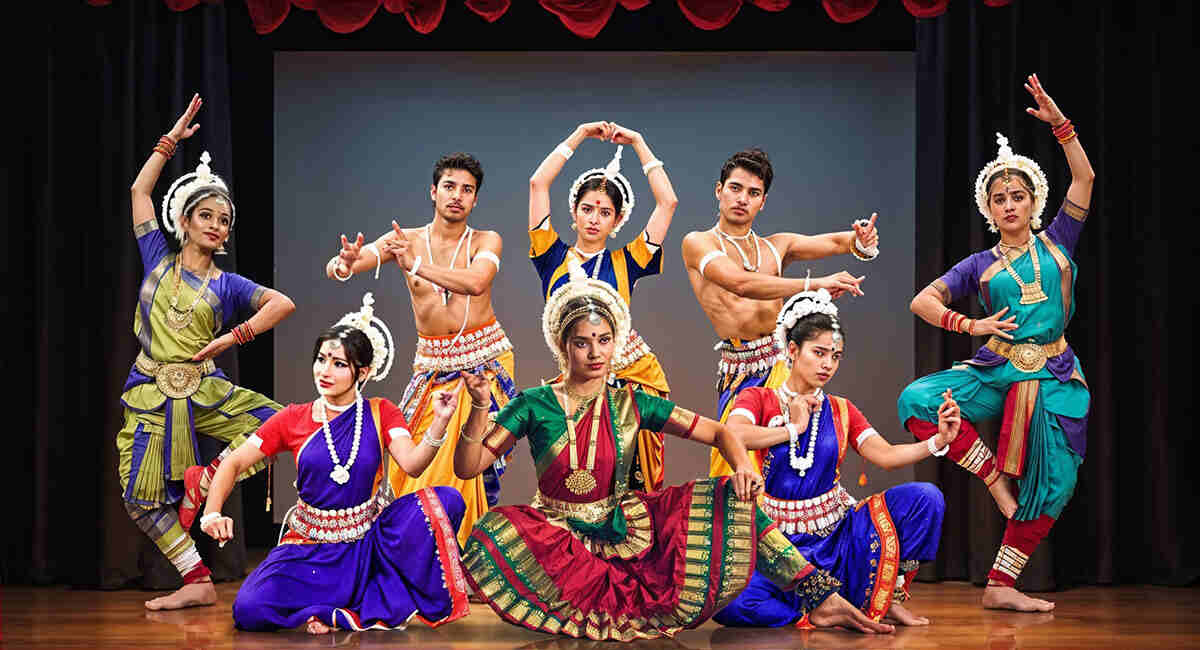Odisha’s Divine Expressions: Bhakti Through Dance
India is a land where spirituality blends beautifully with art, and Odisha is one of the finest examples of this harmony. Known for its majestic temples, intricate sculptures, and age-old traditions, Odisha is also home to a unique form of spiritual expression—dance. The dances of Odisha are not just artistic performances; they are acts of bhakti (devotion), offering both the dancer and the viewer a sacred experience.
From temple courtyards to modern stages, Odisha’s spiritual dance forms speak the language of devotion and serve as a vibrant tribute to the divine. This blog will examine how dance in Odisha becomes a potent bhakti medium, emphasizing traditional folk performances with spiritual undertones and classical forms like Odissi.
The Essence of Bhakti in Odia Culture
Bhakti, or devotional worship, is a central theme in Odia culture. Whether through singing, dancing, painting, or storytelling, the people of Odisha express their love and reverence for God in countless ways. Temples like the Jagannath Temple in Puri, the Lingaraj Temple in Bhubaneswar, and the Konark Sun Temple have historically been centers for religious practices and devotional arts.
Dance, in particular, has long played an essential role in temple rituals. In ancient times, Maharis (female temple dancers) and Gotipuas (young boys dressed as girls) would perform in temples as part of daily worship. The dancers performed these dances to entertain and please the deities, especially Lord Jagannath, the presiding deity of Odisha.
Odissi: The Dance of the Divine
When discussing spiritual dance in Odisha, Odissi is the first name that comes to mind. Odissi is one of India’s oldest classical dance forms, deeply rooted in bhakti traditions. Initially performed in temples, Odissi combines graceful movements, expressive hand gestures (mudras), and soulful facial expressions to tell stories from Hindu mythology, especially tales of Krishna and Radha.
Spiritual Themes in Odissi:
Most Odissi performances center around themes of love and devotion. Dancers often perform Ashtapadis from the Gita Govinda, a 12th-century Sanskrit text by poet Jayadeva that describes the romantic and divine love between Krishna and Radha. These performances’ emotional depth, lyrical beauty, and spiritual meaning captivate audiences and create a bridge between humans and the sacred.
Bhakti in Every Gesture:
The dancer uses every aspect of Odissi dance—from the costume and jewelry to the music and choreography—to elevate the soul and draw closer to the divine. The dance opens with Mangalacharan, an invocation to the gods, followed by pieces like Batu, Pallavi, and Abhinaya, each with devotional significance. The final piece, Moksha, represents spiritual liberation—a fitting end to a journey of devotion.
Gotipua: Devotion in Disguise
Before Odissi became popular on the stage, Gotipua was Odisha’s main devotional dance form. Young boys dressed as females performed Gotipua dances, primarily to honor Lord Jagannath. These boys undergo rigorous training in dance, music, and acrobatics from a young age. Despite their young age, they perform with spiritual depth and grace.
Spiritual Training from Childhood:
Gotipua dancers live and train in Gurukuls, where their daily routine involves physical discipline and spiritual education. They learn to sing hymns, understand the meaning of devotional songs, and perfect their body movements to reflect divine emotions. For them, dance is not a profession—it’s a way of worshipping the Lord with every breath.
Folk Dances: Bhakti of the People
While Odissi and Gotipua are more structured and classical, Odisha is also rich in folk dance traditions that carry the spirit of bhakti. These dances are performed during religious festivals, village rituals, and community gatherings, often accompanied by drums and devotional songs.
Examples of Folk Spiritual Dances:
- Pala: A unique blend of storytelling, music, and dance, Pala is performed to narrate stories from the Ramayana, Mahabharata, and local legends. The lead performer, the Gayaka, sings and dances with expressive gestures that captivate the audience.
- Daskathia: Two performers, with minimal props, present spiritual stories using dramatic narration and rhythmic clapping. It’s a heartfelt and accessible form of devotional entertainment.
- Sankirtan and Bhajan Dance: These are community devotional gatherings where music and dance express group devotion, particularly in Krishna temples and during festivals like Ratha Yatra.
Rituals Turned Performances
Many of Odisha’s dances, which began as temple rituals, now have a place on national and international stages. Despite this venue change, the essence of bhakti remains strong. Dancers still consider themselves instruments of divine expression, and audiences often feel spiritually uplifted by the performance.
Whether performing a solo Odissi recital or a group folk dance in a village square, the Odisha dancers carry centuries of devotional tradition with every step.
A Living Tradition of Devotion
Odisha’s spiritual dances are more than performances—prayers in motion, expressions of the soul, and vibrant acts of bhakti. Whether it’s the grace of an Odissi dancer on stage, the lively steps of a Gotipua boy at a temple festival, or the heartfelt chants of a village Pala, each performance reflects a deep love for the divine.
In a world that often separates the sacred from the everyday, Odisha’s dance traditions remind us that we can live, feel, and express devotion through temples, rhythm, gesture, and art. So, the next time you witness an Odisha performance, watch closely—you’re not just seeing a dance; you’re witnessing a sacred offering.


